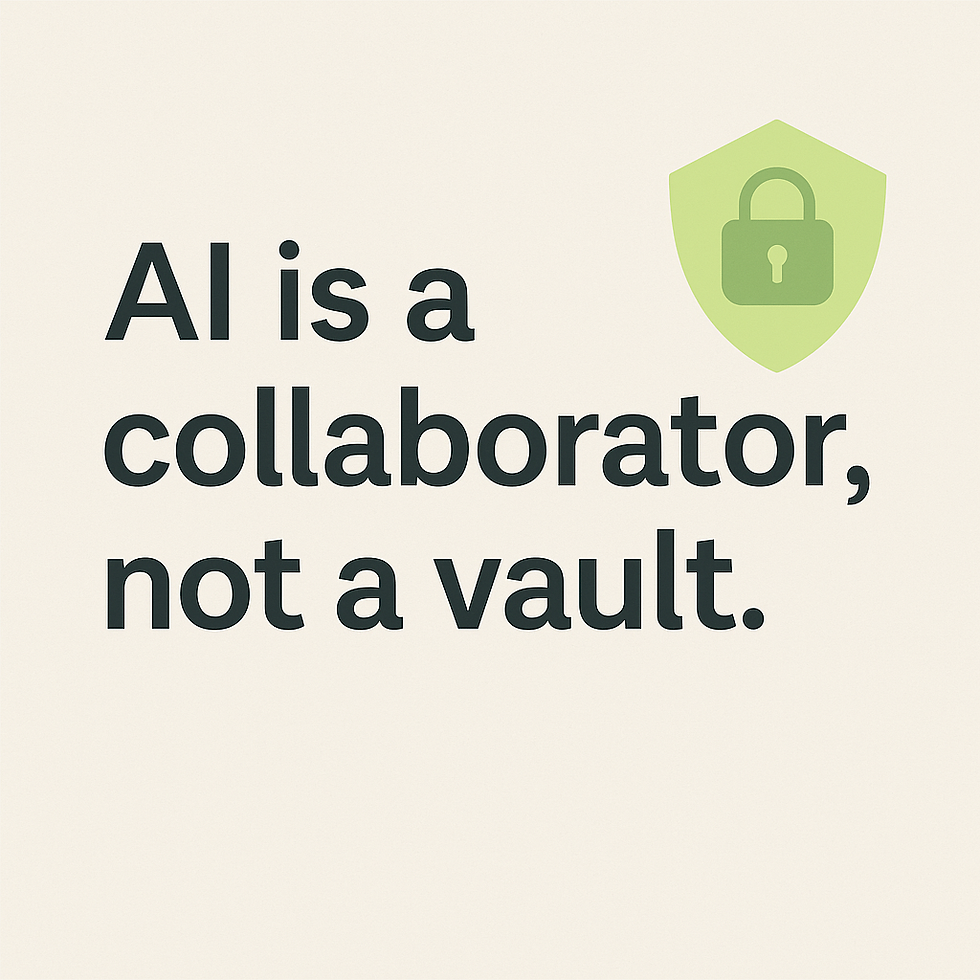The Biggest AI Risk Isn't Obvious Errors: It's the Confident BS That Sounds Perfect
- Jennifer Leonard
- Aug 10
- 4 min read

If you're using AI for client deliverables, strategic planning, or building it into your workflows, you've probably learned that the real danger isn't dramatic failures, it's the polished, confident output that's subtly wrong.
After months of integrating AI across client work, content creation, and strategic projects, I've identified six failure modes that almost slipped through the cracks. These are the patterns I watch for now.
1. Adding Tools You Never Said You Had
I asked AI to summarize a client's Martech setup, and it confidently mentioned tools like "Braze or Segment." These were tools they didn't use and never mentioned.
It assumed what most companies might use, not what this one actually did.
Watch for AI filling in "typical" answers when your situation isn't typical.
2. Describing a Tool Based on the Wrong Category
I was testing a content repurposing tool and asked AI to explain how it worked. The summary sounded great: auto-adapts content across social platforms, repackages video snippets, etc.
The problem was the tool didn't actually do any of that. It relied on a human content team.
If you're relying on AI to summarize a tool, double-check with the actual product page or demo.
3. Recommending Prompt "Tricks" That Don't Actually Work
You'll see advice like: "Just ask for high-confidence answers" or "Tell it not to hallucinate."
Sounds smart, right? But public AI tools don't have a real-time confidence dial. They'll still make stuff up, even if you ask nicely.
Helpful prompts are good. Verification is better.
4. Legal Disclaimers That Sound Official (But Aren't)
I asked AI to draft a copyright section for one of my downloadable guides. The wording looked solid. Professional. Familiar.
But… I'm not a lawyer. And neither is the AI.
AI can mimic the tone of legal language, but not the accuracy or enforceability. When it matters, get a human lawyer.
5. Inflating Your Resume for You
When writing resume bullets, AI loves to add impressive metrics or team sizes that you never gave it. 10x ROI? Sure. Managed 15 people? Why not.
Even if it sounds like something you might have done, it's still fiction unless it's fact.
Don't let AI "yes-man" your career. Use your real numbers or none at all.
6. Buzzword Bingo Without the Receipts
In early drafts of messaging frameworks, I noticed AI slipping in phrases like:
"Built scalable GTM systems"
"Led cross-functional AI transformation"
"Drove end-to-end marketing automation"
They sounded polished, professional, resume-ready, even impressive.
But here's the problem: They weren't grounded in the specific examples I'd provided as input. AI was pattern-matching to corporate language it had seen before, not reflecting the actual work I'd described.
Why it matters: This kind of language is everywhere in resumes and pitch decks. AI defaults to it because it sounds authoritative. But if you're not careful, it can make you sound generic rather than authentic.
My rule now: If a phrase sounds a little too perfectly "LinkedIn," I stop and ask: Is this grounded in what I actually told the AI? And does it reflect my specific experience?
How I Avoid These Issues (Without Slowing Down My Workflow)
This isn't about using AI less, it's about building better verification into your process.
Here's what I've learned after integrating AI across multiple client engagements:
Ask It to Show Its Work
Prompt for sources and say things like: "Only include facts you can verify. If unsure, say so." Then check what it gives you, especially if it sounds slick.
Break Big Tasks Into Smaller Prompts
Instead of "Build a full GTM plan," try "What are 3 ways marketplaces typically approach GTM?" This reduces the risk of sweeping generalizations or made-up frameworks.
Use Tools That Pull Real Sources
If the tool offers Retrieval-Augmented Generation (RAG), use it. This means it pulls in actual docs before generating the answer, grounding it in reality. Perplexity, ChatGPT with custom data, and some enterprise tools do this well.
Avoid Asking for Legal or Compliance Advice
AI can help you draft the tone of a policy or contract, but it can't check risk or enforceability. That's a human job.
Cross-Check with Other Sources
Even just Googling a claim or checking it against Perplexity or Consensus can reveal if something's off.
Trust Your Domain Expertise
If something feels a little too smooth, too good, or just… off, pause and double-check.
Bottom Line:
Even as AI models improve dramatically (with OpenAI claiming GPT-5 reduces hallucinations by 45-80% and Google Gemini achieving rates as low as 0.7% on certain benchmarks), the need for strategic oversight only increases. The landscape remains inconsistent. While some models excel in specific areas, OpenAI's newest reasoning models actually show higher hallucination rates than their predecessors. For example, the o3 model hallucinates 33% of the time on person-related questions, compared to less than half that rate for the previous o1 model.
AI is incredibly powerful for execution, but it's not a source of truth.
You're the strategist. You're the editor. You're the one with domain expertise.
Use AI to speed up the work, but never to skip the thinking.



Comments